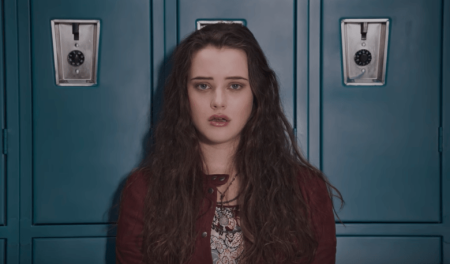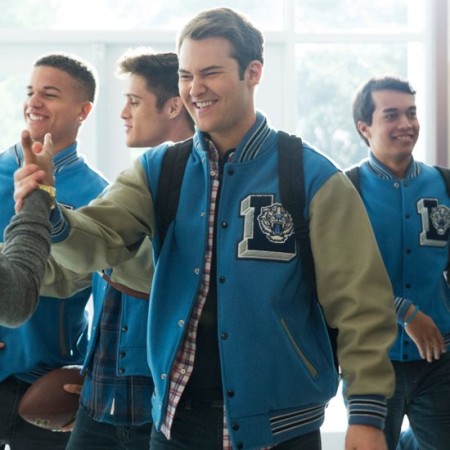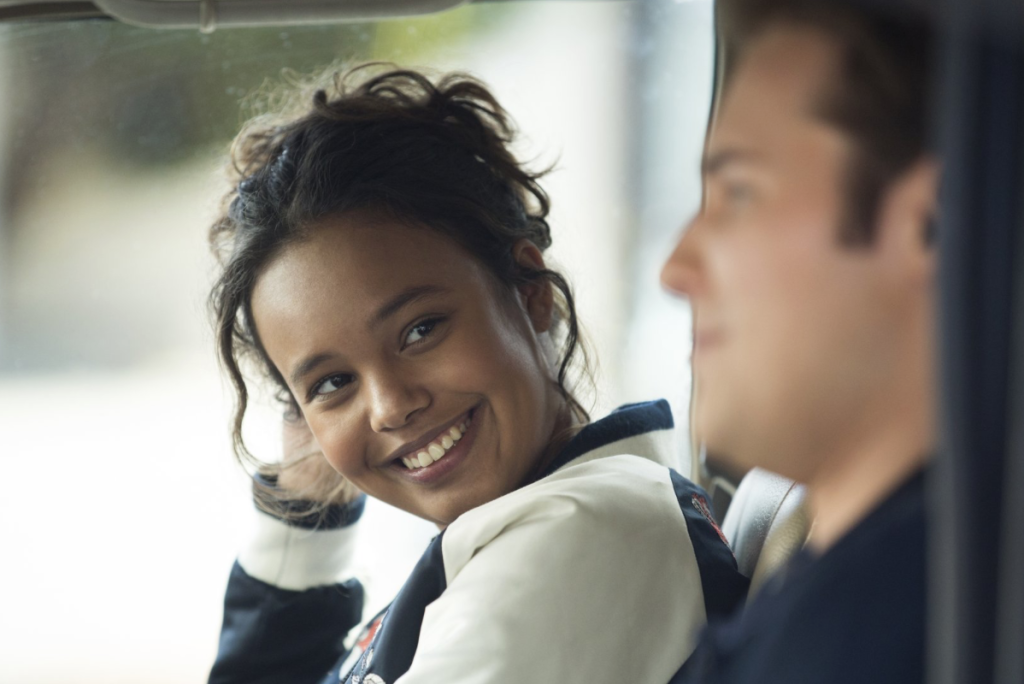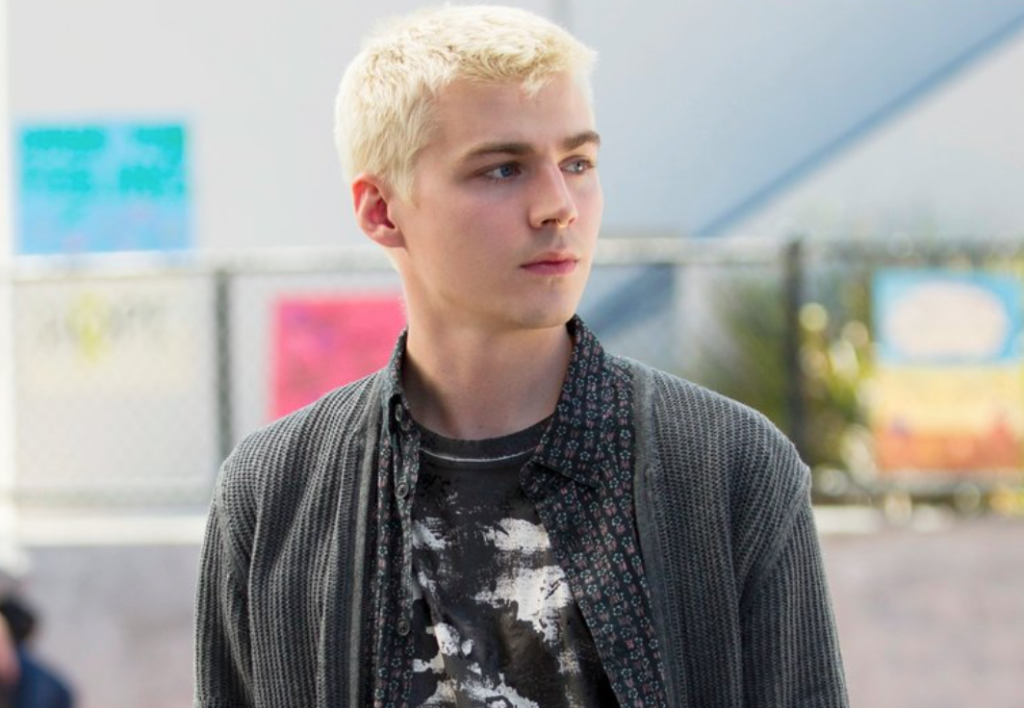WARNING: LOTS OF SPOILERS BELOW!
While I was on vacation, my sister-in-law, knowing how entrenched I am in any and all entertainment, asked me, “Have you seen 13 Reasons Why?” The question struck me as odd. For starters, I wasn’t a teenager. And I thought I presented an image that I would never be interested in a CW-equivalent show, especially one without any superheroes.
What little I knew about the Netflix show made it sound like a melodramatic upgrade to the after-school-special format that used to haunt the remote control of my youth. I assumed that each episode would detail a struggling high school student who, in the end, killed himself, and we’d be left to ponder how such a thing could happen… 13 times. That sounded about as fun as riding a bike with no seat.
But my sister-in-law spoke about it passionately. She wasn’t sure she liked the girl who’d committed suicide, the one who set the whole story in motion. She sympathized more with the “victims” (most of them) of the tapes and less with “Hannah.” And that’s what made me perk up. Expected is boring. Unexpected is intriguing.
If I told you a girl who committed suicide was wronged, there’s no story there. But if I told you the girl who committed suicide was in the wrong, now you have my attenion. The fact that those two things don’t go together is what’s so intriguing.
An assassin who’s a mean guy. No thanks.
An assassin who’s the nicest guy you’ll ever meet. Intrigued.
A high school teacher who follows the rules. No thanks.
A high school teacher who runs a meth lab. Intrigued.
What surprised me even more is how much street cred the geeky movie sites were giving the show. That’s how I knew 13 Reasons Why was better than your average high school TV drama. And I was committed to finding out why.
Less than halfway into the first episode, I was hooked. I was so hooked that, even though I was on vacation in one of the most beautiful cities in the world, I had to force myself to leave the apartment every day. I begrudgingly limited myself to one episode per night. And it was hard. Which leads us to examine why this show is so good.
The first thing 13 Reasons Why does is its most important and sets the table for everything else that works. If there is only one lesson to take away from this show’s success, it is this. Ready?
Take a subject matter, and find a fresh way into it.
You’ve heard it here before and I will preach it until the end of Scriptshadow. This approach is one of the best ways to create something that stands out, that resonates, that gets people to talk about your show/movie.
We’ve seen hundreds of high school shows and movies before. If I were to pitch you a show where a teenager is bullied and thinking about committing suicide, what would your reaction be? “I’d rather watch grapes ferment.” We’ve seen so many versions of that, it makes us sick to our cliche-induced stomach just thinking about it.
13 Reasons Why changes that by rearranging the format. When the show begins, the main character Hannah, has already killed herself. But she didn’t go quietly. She’s recorded 13 audio tapes. In each of these tapes, she singles out someone from the school, explaining how their actions contributed to her choice to take her life.
But Hannah didn’t stop there. She informs all 13 people who receive the tapes that they are to listen to every tape, and when they’re finished, pass them on to the next person on the list. There is an anonymous source who will be watching this. If any of the students decide not to listen or not to pass the tapes on, the anonymous source will release the tapes to the public, and the implication is that the revelations on the tapes are so bad, none of the recipients will dare want that to happen.
Our story begins when Clay Jensen receives the tapes. Clay is a studious kid who drifts in and out of cliques, not really belonging to any of them, yet active enough that everyone knows who he is. As the show begins to introduce flashbacks of Hannah before she killed herself (which continue throughout the show), we realize that Clay and Hannah were friends and that Clay was secretly in love with her. Which brings up the first intriguing question of the show. What could this sweet kid have done to this girl to become a “reason” she killed herself?
And this leads us the show’s genius dramatic structure. We’re going to have to wait to get that answer. Every thing about this show is designed to create suspense, to ask questions but not give away the answers right away. As anyone who knows drama well, this is the essence of what keeps a viewer interested. Create compelling questions. Then don’t give us the answers immediately.
Of course, that’s easier said then done. I could write a show called “Ladybug” about a guy who loses his ladybug and make you wait for the answer about how I lost him. But you’re probably not going to care. The trick is to make the situation and questions compelling enough so that we want to find out what happened. This is why the concept behind 13 Reasons Why is so great. It organically sets up a bunch of really awesome questions we want answers to.
For starters, Clay’s tape. We know it’s probably number 13. But what will be revealed on it? Did Clay do something terrible he didn’t know about? Or did Hannah kill herself because he wouldn’t reveal his love to her? Even if all the episodes aren’t great, how genius is that carrot? It’s sitting there at the end of the story’s stick and you absolutely have to watch to find out what happened.
From there, we’re wondering why Hannah ultimately decided to kill herself. We’re wondering what that “really bad thing that happened” the show keeps alluding to is. We’re also wondering which of the characters were involved, as well as how extensively they were involved. But the show doesn’t stop there. And this is where the other genius part of this premise takes over.
The premise injects an endless amount of conflict into the series. In bad drama, conflict is created artificially. Sensing a boring episode, a writer may have one character cheat on another to stir up some conflict. 13 Reasons Why doesn’t have to worry about that. Hannah’s tapes have created a giant cauldron of conflict between the characters on the tapes. Because they’re all connected, because they’ve participated in some horrible things that hurt Hannah, they’re always scrambling to save their asses. They’re battling with each other, throwing each other under the bus, and best of all, figuring out what to do about Clay.
What we find out is that Clay is the next-to-last person on the Tapes List. And he’s the biggest wild-card of all. Whereas everyone else discarded Hannah like garbage, Clay was actually her friend. This makes Clay dangerous. Might he go to the school with the tapes? Or worse, the cops? It also injects another suspenseful question into the mix – how far is the group willing to go to cover up their secret? Will they threaten Clay? Hurt him? Or worse?
That’s what I love about this premise! It does all the work for the writer. You don’t have to manufacture anything because the story threads are already there.
And that’s not even all! The writers make the genius choice to tell half of the story in flashback and half in the present. The reason this is so important is that it allows us to get to know and care about Hannah. If Hannah was only a disembodied voice this whole series, we wouldn’t have cared as much. Instead, we get to know her, sometimes loving her, sometimes hating her, and therefore in the end, when the inevitable happens, we feel like we’ve lost a real person.
The final lesson I learned here is that cliches look different when they’re dressed differently. We’ve seen all of these cliches before – bullying, teen suicide, cheating, slapping, breakups, addiction – to the point where they don’t hold any dramatic value anymore. They feel like plug-and-play devices the writers throw in to make sure shit is happening onscreen. But when you come at old ideas in fresh ways, cliches have a way of coming alive. Because we’re seeing the story from a different lens, everything looks different. And it’s why the age-old screenwriting advice is true – Every great show/movie starts with a great concept.






